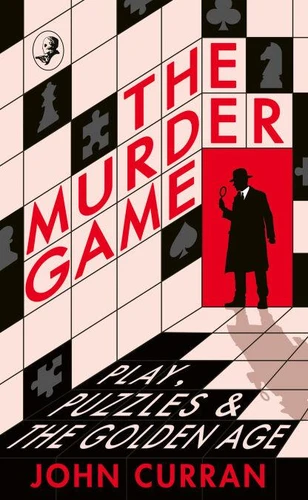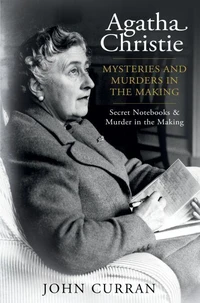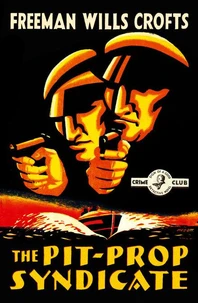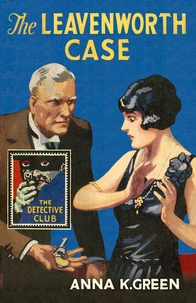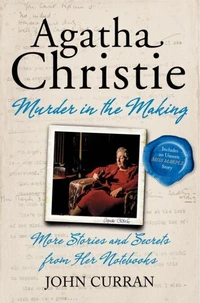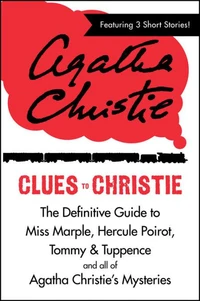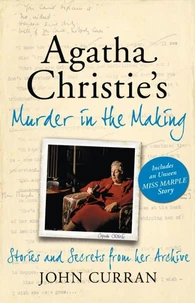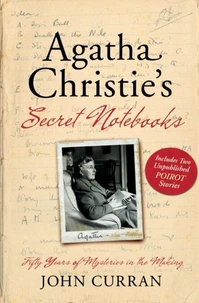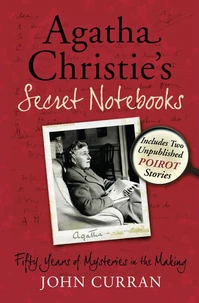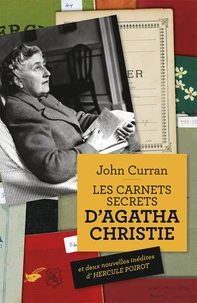The Murder Game. Play, Puzzles and The Golden Age
Par :Formats :
Disponible dans votre compte client Decitre ou Furet du Nord dès validation de votre commande. Le format ePub protégé est :
- Compatible avec une lecture sur My Vivlio (smartphone, tablette, ordinateur)
- Compatible avec une lecture sur liseuses Vivlio
- Pour les liseuses autres que Vivlio, vous devez utiliser le logiciel Adobe Digital Edition. Non compatible avec la lecture sur les liseuses Kindle, Remarkable et Sony
- Non compatible avec un achat hors France métropolitaine
 , qui est-ce ?
, qui est-ce ?Notre partenaire de plateforme de lecture numérique où vous retrouverez l'ensemble de vos ebooks gratuitement
Pour en savoir plus sur nos ebooks, consultez notre aide en ligne ici
- Nombre de pages480
- FormatePub
- ISBN978-0-00-867990-3
- EAN9780008679903
- Date de parution11/09/2025
- Protection num.Adobe DRM
- Infos supplémentairesepub
- ÉditeurCollins Crime Club
Résumé
From The Murder of Roger Ackroyd to Magpie Murders, and related diversions including cryptic crosswords and Cain's Jawbone, The Murder Game examines the games authors played with their readers and the importance of puzzles in Golden Age whodunits.
With books flourishing in the 1920s and '30s like never before, no genre was more innovative or popular than detective fiction. It was an era that saw the emergence of Agatha Christie, Dorothy L.
Sayers, John Dickson Carr, Ellery Queen and dozens of other authors who became household names for a generation of readers. The Golden Age of Detection has enjoyed a great resurgence of interest in recent years, with publishers mining back catalogues to bring the best of yesteryear to very receptive new audiences. What is it about a literary movement that took off in the 1920s that still appeals to book lovers in the 2020s? In this authoritative new study, John Curran reveals that it is the ludic qualities of classic crime fiction that continue to intrigue.
At its heart is the 'whodunit' game between writer and reader, but there is also the game between detective and murderer, between publisher and book-buyer, even between the writers themselves. Coinciding with an increase in leisure time and literacy, the Golden Age also saw the development of the crossword, the growth of bridge and Mahjong, the enduring popularity of jigsaws and the emergence of Cluedo - all activities requiring the 'little grey cells'.
The Murder Game considers all of these, and many other sporting and competitive recreations, helping to explain the reading public's ongoing love affair with the Golden Age.
Sayers, John Dickson Carr, Ellery Queen and dozens of other authors who became household names for a generation of readers. The Golden Age of Detection has enjoyed a great resurgence of interest in recent years, with publishers mining back catalogues to bring the best of yesteryear to very receptive new audiences. What is it about a literary movement that took off in the 1920s that still appeals to book lovers in the 2020s? In this authoritative new study, John Curran reveals that it is the ludic qualities of classic crime fiction that continue to intrigue.
At its heart is the 'whodunit' game between writer and reader, but there is also the game between detective and murderer, between publisher and book-buyer, even between the writers themselves. Coinciding with an increase in leisure time and literacy, the Golden Age also saw the development of the crossword, the growth of bridge and Mahjong, the enduring popularity of jigsaws and the emergence of Cluedo - all activities requiring the 'little grey cells'.
The Murder Game considers all of these, and many other sporting and competitive recreations, helping to explain the reading public's ongoing love affair with the Golden Age.
From The Murder of Roger Ackroyd to Magpie Murders, and related diversions including cryptic crosswords and Cain's Jawbone, The Murder Game examines the games authors played with their readers and the importance of puzzles in Golden Age whodunits.
With books flourishing in the 1920s and '30s like never before, no genre was more innovative or popular than detective fiction. It was an era that saw the emergence of Agatha Christie, Dorothy L.
Sayers, John Dickson Carr, Ellery Queen and dozens of other authors who became household names for a generation of readers. The Golden Age of Detection has enjoyed a great resurgence of interest in recent years, with publishers mining back catalogues to bring the best of yesteryear to very receptive new audiences. What is it about a literary movement that took off in the 1920s that still appeals to book lovers in the 2020s? In this authoritative new study, John Curran reveals that it is the ludic qualities of classic crime fiction that continue to intrigue.
At its heart is the 'whodunit' game between writer and reader, but there is also the game between detective and murderer, between publisher and book-buyer, even between the writers themselves. Coinciding with an increase in leisure time and literacy, the Golden Age also saw the development of the crossword, the growth of bridge and Mahjong, the enduring popularity of jigsaws and the emergence of Cluedo - all activities requiring the 'little grey cells'.
The Murder Game considers all of these, and many other sporting and competitive recreations, helping to explain the reading public's ongoing love affair with the Golden Age.
Sayers, John Dickson Carr, Ellery Queen and dozens of other authors who became household names for a generation of readers. The Golden Age of Detection has enjoyed a great resurgence of interest in recent years, with publishers mining back catalogues to bring the best of yesteryear to very receptive new audiences. What is it about a literary movement that took off in the 1920s that still appeals to book lovers in the 2020s? In this authoritative new study, John Curran reveals that it is the ludic qualities of classic crime fiction that continue to intrigue.
At its heart is the 'whodunit' game between writer and reader, but there is also the game between detective and murderer, between publisher and book-buyer, even between the writers themselves. Coinciding with an increase in leisure time and literacy, the Golden Age also saw the development of the crossword, the growth of bridge and Mahjong, the enduring popularity of jigsaws and the emergence of Cluedo - all activities requiring the 'little grey cells'.
The Murder Game considers all of these, and many other sporting and competitive recreations, helping to explain the reading public's ongoing love affair with the Golden Age.

